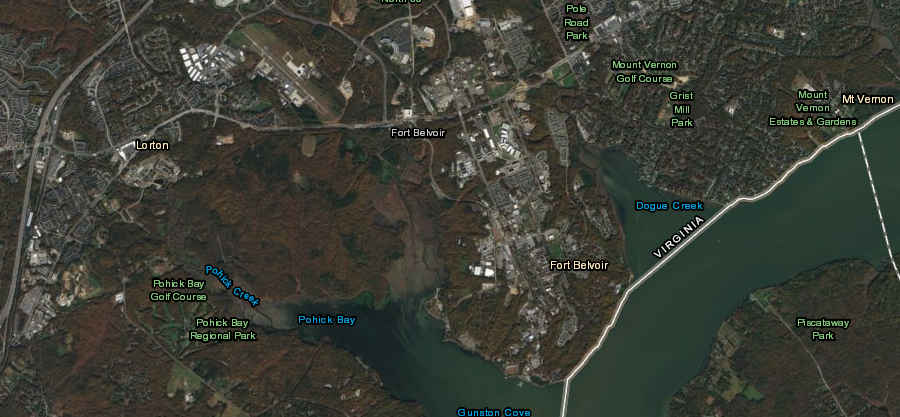
Fort Belvoir is located downstream from George Washington's home at Mount Vernon
Source: ESRI, ArcGIS Online

Fort Belvoir is located downstream from George Washington's home at Mount Vernon
Source: ESRI, ArcGIS Online
In 1915, the War Department chose to move the Army Corps of Engineers Training School, from Washington Barracks (Fort McNair) to the old site of William Fairfax's plantation. That led to development of modern Fort Belvoir.
Belvoir was the colonial home of William Fairfax. He moved from Massachusetts to Virginia in 1734 to become land agent for the Fairfax Grant owned by his cousin, Thomas Sixth Lord Fairfax. William Fairfax also served as Collector of Customs, an appointed job that reflected his high status as well as generated income for his personal use.1
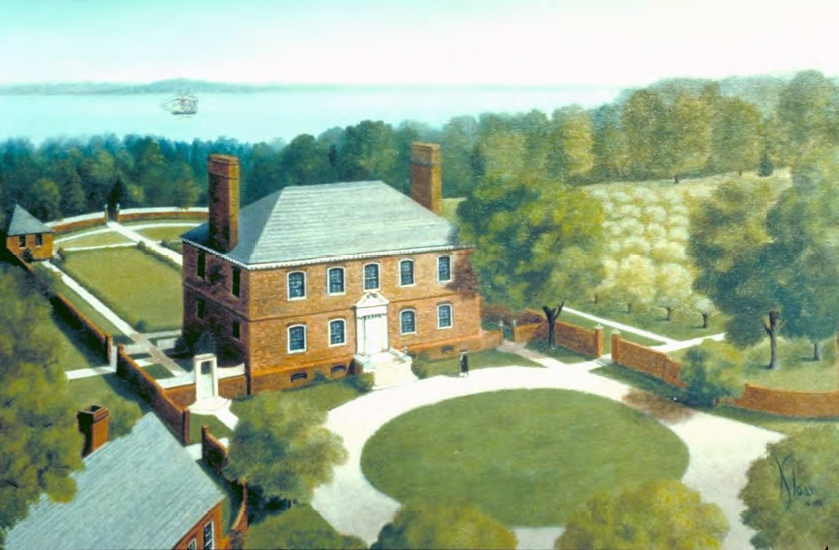
artist s conception of Belvoir mansion house
Source: Archeological Society of Virginia Quarterly Bulletin, The Centennial Of Camp A. A. Humphreys (Fort Belvoir) And Some Hidden Historic Cultural Resources
William Fairfax moved up the Potomac River from Stafford County and built the Belvoir mansion house around 1741-43. The house burned in 1783, but the brick walls survived until September 1814. They were destroyed by cannon fired from British ships during the Battle of the White House, after those ships had forced the surrender of Alexandria and American miitia tried to block them from moving back down the Potomac River.
In 1910, the Federal government purchased 1,500 acres, including the foundations of the Fairfax home, with plans to build a reformatory for the District of Columbia. After protests by the Mount Vernon Ladies Association, the prison was constructed at Lorton.
In 1915, the US Army established Camp Belvoir and used it as as a rifle range and training camp for the engineers stationed at Washington Barracks. That base, at the confluence of the Potomac and Anacostia rivers, was later named Fort McNair and is now Joint Base Myer-Henderson Hall). Training exercises included construction of pontoon bridges over creek valleys, as well as rifle practice.
In 1917, when the Army expanded during World War I, Camp Belvoir was renamed Camp A.A. Humphreys. That honored Major General Andrew A. Humphreys, who had been chief of staff of the Army of the Potomac during the Civil War and Chief of Engineers between 1866-79.2

Camp A.A. Humphreys was built after the US entered World War I
Source: Fort Belvoir, 1917-1918: Establishment of Camp A. A. Humphreys
The Army built temporary wooden structures to house the soldiers. African-American laborers in segregated military units provided most of the work force.
Because groundwater wells were not adequate for the expanded number of soldiers, Lake Accotink was created in 1918 by building the hollow concrete Springfied Dam across Accotink Creek. A water treatment plant was constructed on the site of Accotink Mill.
The Army Gas School was located at Camp A.A. Humphreys after 1917. Training with mustard gas had to be relocated from American University, after a cloud of gas blew beyond the training zone into a civilian residential area.
Camp Humphreys was a demobilization center in 1919 for soldiers returning from Europe, and that year the Engineer School was officially moved there from Washington Barracks..
The US Army purchased more local farms and the remainder of the neck of land on which Camp Humphreys was located, creating a base with 6,000 acres of land. A 3,300-acre parcel closer to the railroad is now the site of Davison Army Airfield. Many of the local residents displaced by the new military installation were members of the Woodlawn Quaker Meeting, with a long pacifist tradition.
In 1922, Camp Humphreys was designated as a permanent installation and renamed Fort Humphreys. Permanent brick buildings were built to replace the wooden structures, but the reduced number of soldiers could be supplied by the groundwater wells. In 1922 the engineers blasted a hole in the concrete dam which had created Lake Accotink, in order to prevent a flood from damaging the railroad trestle downstream.
Hauling construction materials to Fort Humphreys by land in the 1920's was a challenge. The trolley was extended from Mount Vernon to the new base, and a Richmond, Fredericksburg and Potomac (RF&P) railroad spur was built from Newington. The Washington-Richmond Highway (Route 1) was paved with concrete to Alexandria; that helped support the heavy trucks and increased traffic.
On the base, a tiny train with a two-foot gauge (vs. the standard 4-foot, 8.5 inches gauge) was used to move people and material. The railroad also served as a training tool for Army engineers. Similar narrow-gauge tracks had been constructed in Europe to supply the front lines during World War I.
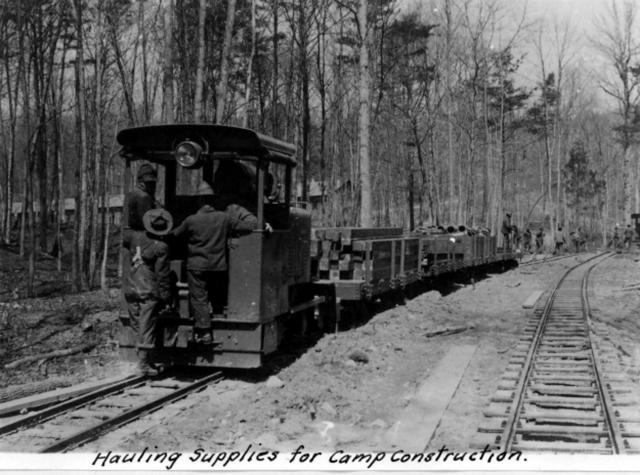
tiny trains were used to build Camp A.A. Humphreys in 1918, and to supply the front in Europe in World War I
Source: US Army, Forgotten tiny trains carried WWI vets to victory
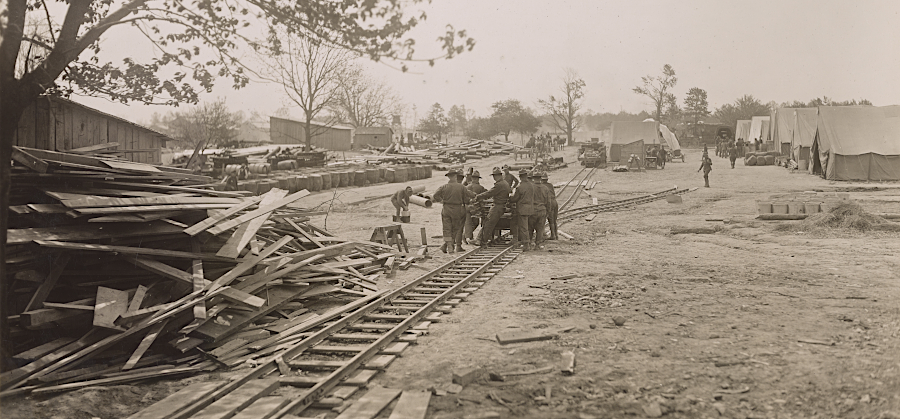
building a railroad at Camp A.A. Humphreys
Source: National Archives, Construction period, Camp Humphreys, Virginia. Industrial Railroad, 5m sections of rail loaded on hand cars, being transported to point where they will be laid
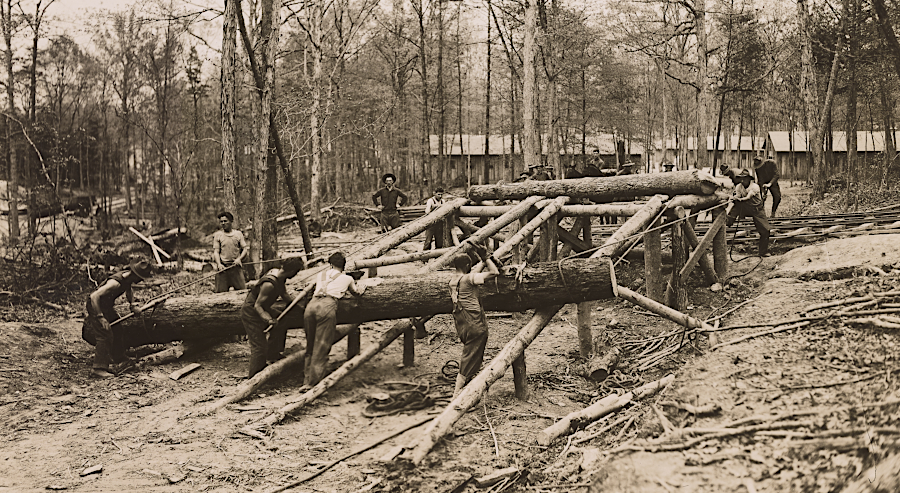
using the railroad to move logs at Camp A.A. Humphreys
Source: National Archives, Construction period, Camp Humphreys, Virginia. Standard Gauge Spur. Loading logs onto Industrial Railroad cars at Belvoir. Showing skids in mode of raising logs to temporary platform. These platforms are placed at convenient intervals along this road.
The Corps of Engineers protected the site of the Belvoir mansion house and the graves of William Fairfax and his wife during construction of the camp, and even tried to conduct archeological excavations of the house. President Rosevelt renamed the facility Fort Belvoir in 1935.
After World War II started in 1939, the US Army purchased another 3,000 acres and built numerous "temporary" structures intended to last just five years. Some were still in use 40 years later. Today the facility has 8,600 acres.
After serving as a demobilization center again at the end of World War II, Fort Belvoir became primarily a research and development center for Army engineers. In 1988, the Engineer School moved from Fort Belvoir to Fort Leonard Wood in Missouri. In 2011, as part of the Base Realignment and Closure (BRAC) the National Geo-Spatial Intelligence Agency consolidated six organizations at its new headquarters on Fort Belvoir's North Area.3
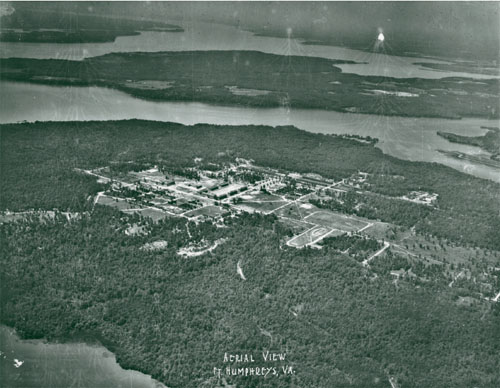
Camp A.A. Humphreys was constructed in 1918
Source: Fort Belvoir, Inter-War Period: 1919-1939
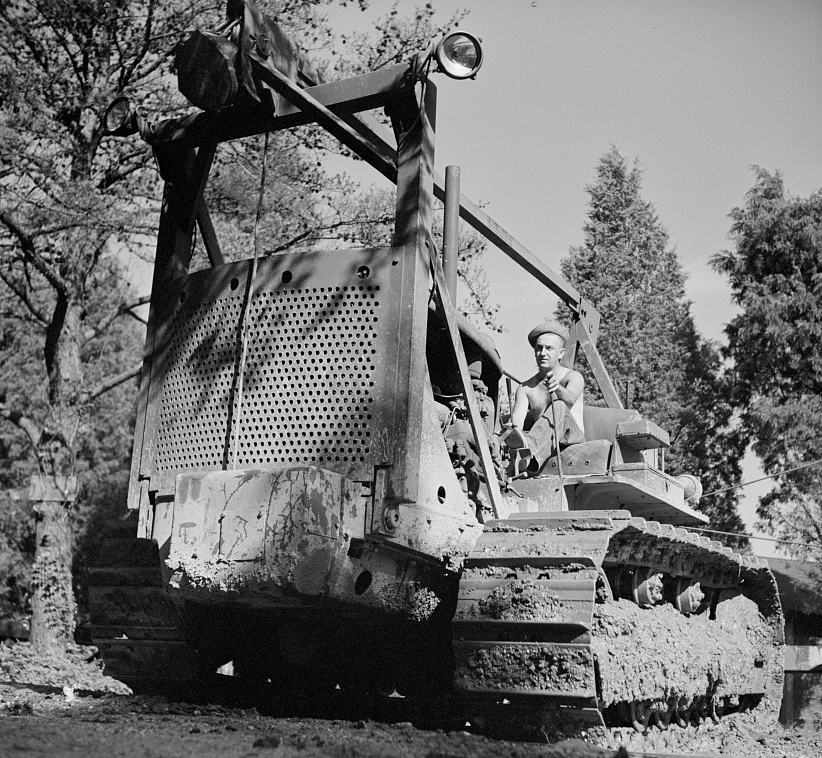
training at Fort Belvoir in 1942
Source: Library of Congress, Fort Belvoir, Virginia. A soldier operating a heavy duty tractor
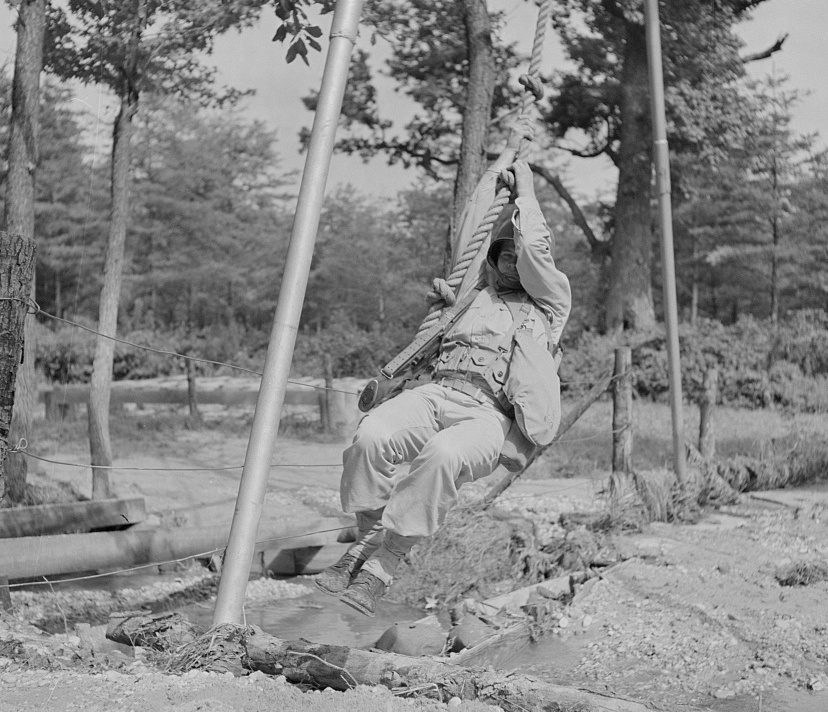
preparing for war at Fort Belvoir in 1942
Source: Library of Congress, Fort Belvoir, Virginia. Sergeant George Camblair getting rigorous physical training on the obstacle course